By understanding targeted and personalized marketing, you can create high ROI marketing campaigns for your eCommerce and online business that earn new and returning customers.
Targeted marketing
TARGETED MARKETING leverages user data to identify the audience(s) most likely to buy your services or products, and then promotes your brand to those groups. Through good market segmentation strategies, targeted marketing focuses your marketing efforts on only the most relevant groups of customers.
For example, if you are a B2C company that sells high-end kitchen appliances, you probably want most of your marketing efforts to go toward homeowners in their mid-thirties or older, not their kids. It seems like a simple idea, but with the breadth of Big Data, you can identify and target groups with high conversion potential. We, therefore, suggest mining your data to create detailed profiles of buyers using a combination of demographic and behavioral info.
Demographic segmentation uses measurable statistics. It is usually the basic criteria for identifying target markets based on:
- Gender
- Age
- Income level
- Marital status
- Education
- Race
- Religion
Geographic segmentation is another way to segment your market and involves grouping them based on location data such as:
- Home addresses
- Neighborhood
- Postal/zip code
- Area code
- City
- Province/State
- Country (if your business is international)
When you combine demographic, geographic, and other segmentation criteria, you can create an accurate picture of your ideal customer. What’s more, you will have some of that information, or at least know where to start looking.
How does personalized marketing work?
Personalized marketing (or one-to-one marketing) is the ultimate form of targeted marketing. It uses collected data to create custom messages for individual consumers based on their shopping interests. Greeting someone by name creates more impact than by saying, Dear Customer. Showing them products that match their lifestyle will also create positive feelings versus recommending products that they have no interest in.
This is also often an automated process where marketing software designs individual messages and builds customer-centric recommendation engines. The most common example is Amazon, which leverages user browsing habits and shows relevant products that they might like. With personal data, a website can automatically personalize a visitor’s experience by showing them a customized page with their preferred language and relevant products.
How do targeted and personalized marketing compare?
When it comes to marketing in 2017, the goal is to avoid a one-size-fits-all exercise and move toward promoting relevant content to increase engagement, conversions, and loyalty. People want exclusivity and relevance rather than generic content.
Targeted marketing is a higher-level version of this idea, and, for most businesses, the best marketing strategy to start with. In fact, you probably have some of this information already. Look back at your business plan to see what markets your initial research identified as your primary customers. Remember, the smaller and more focused the group that you are speaking to, the more relevant your content can be. Therefore, this can (and often does) translate into increased sales, improved customer satisfaction, and better visibility online. According to MarketingProfs, personalized content marketing directly increases sales by up to 19%!
Pro tip: People visiting your site have different intentions. Put yourself in their shoes. A website that displays relevant content will always win over one that offers only generic content. Do this through targeted and personalized marketing.
Get started with targeted and personalized marketing
Publishers and brands alike have been creating content based on audience profiles for years; the difference today is the technology behind the process. Because data collection has become more sophisticated, personalizing content has become easier. Right now though, you might be thinking that content personalization is valuable but perhaps complicated and time-consuming. Fortunately, there is an easy-to-use software available. Personalization software includes VWO and its competitors like Optimizely and Convert.com. In addition to those, there are also tools like:
- Personyze
- Marketizator
- Monoloop
- Monetate
- Apptus
- Granify
- Gravity (content personalization for publishers)
- Apsalar (mobile behavioral targeting)
- Vero (targeted emails based on user behavior)
- OneSpot (personalized content ads)
As customer expectations and marketing technology evolve, the shift toward personalized and targeted marketing will also become more important for businesses like yours. Customers expect tailored communication, a better experience, and consistency across channels. Finally, moving your marketing campaigns toward this ideal will also help improve your SEO in the bargain!
For more information about targeted and personalized marketing, or to get your next project started with DotcomWeavers, please contact us today!
Receive a Personalized Consultation for Your eCommerce Requirements!
Receive a Personalized Consultation for Your eCommerce Requirements!
